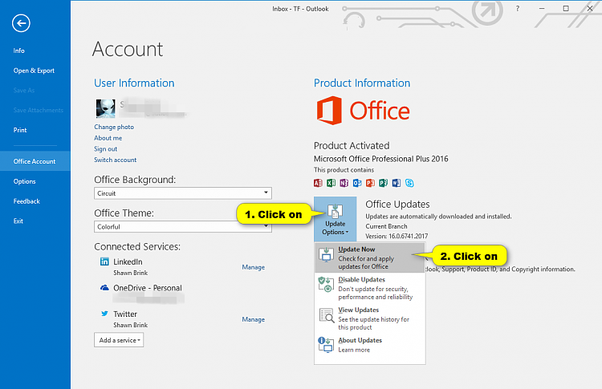

Outlook will automatically upgrade any existing mail profiles when run for the first time and should not require any special configuration from the user. Microsoft has done a good job of making Office settings/profiles migrate easily to new versions, and the same is true for 2016. As always (and especially with multi-step software deployments), be sure to test deployment with a few pilot systems before running it for all of production. You can deploy sequential applications in SCCM by using software packages (setting the uninstall program to always run first in the install program properties), by using software applications (setting a software dependency for the uninstall script to run prior to install), or by using a task sequence that contains all of the steps (task sequences can do more than just deploy an OS, after all). Of course, you will want to run step 1 and step 2 together to minimize the amount of time that users are without Office on their systems. Step 3 – Deploy both packages simultaneously with Configuration Manager The final step is to package it up for deployment in SCCM. This reference guide contains all available commands to customize the XML file which controls how Office 2016 is downloaded, installed, and configured. There are several guides on how to use the Office 2016 Deployment Tool, which allows you to download the Office 365 client installation files and package them up for deployment. Step 2 – Automate the installation of Office 2016 There is a great guide available from Jay Michaud on how to do all of this: All scripts can be combined and run from a single package/program using SCCM. For Office 20, a separate script can be run to automate the uninstall using O15CTRRemove.diagcab.

There are several ways to uninstall previous Office versions, but the most reliable I have found in my experience is to use the available OffScrub scripts from Microsoft, which can be extracted from the EasyFix uninstallers for Office 2003, 2007, and 2010. Installing Office 2016 will not do this on its own, unfortunately. Step 1 – Automate the uninstall of previous versions of Office This is a quick reference on how to automate the deployment of Office 2016 to your environment, while also fulfilling the prerequisite of removing any previous versions of Office (including 2013).

The end-of-life for the click-to-run version of Office 2013 is quickly approaching (February 28th, 2017).


 0 kommentar(er)
0 kommentar(er)
